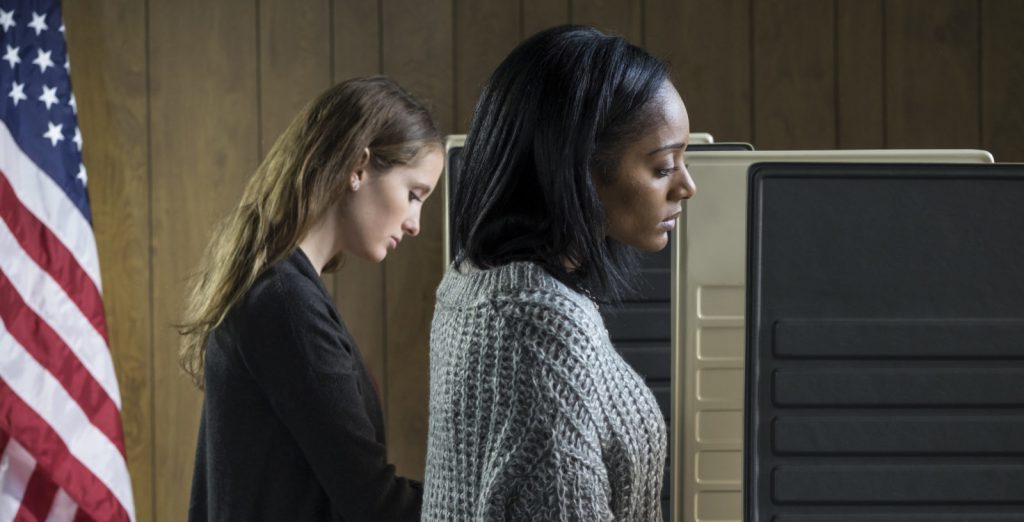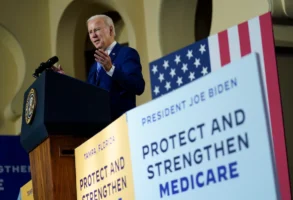
Published August 6, 2018
Most strategists and analysts say this November’s midterms will be determined by turnout. According to this view, whichever party more fully energizes its partisans will come out on top. New data, though, shows this common wisdom has it exactly backward. It’s the voters who sit between the two parties, not the party bases, who will choose which party wins.
That’s a surprising finding from the most recent Democracy Fund Voter Study Group poll. This biannual poll, which asks thousands of Americans their views on issues, personalities and voting intentions, has been querying the same people their views going back to 2011 (in the polling world, this is known as a longitudinal survey). That means it is large enough and has the right sort of questions to do what most polls can’t: report accurately on small groups within the overall electorate.
Two of these groups are of vital import: “Romney-Clinton” voters and “Obama-Trump” voters. Each consists of people who changed which party’s nominee they voted for from 2012 to 2016. Where they go will determine who wins because they are strategically placed in most of the target House and Senate races up for grabs this fall.
“Romney-Clinton” voters are generally the sort of highly educated, affluent, more moderate voters who disapprove of Donald Trump. The most recent Voter Survey shows Mr. Trump had less than a 20 percent job approval rating among them; nearly 70 percent of these formerly Republican voters disapprove of his job performance. And they are taking this dislike with them to the voting booth. Forty-three percent say they will vote for Democrats this fall; only about 20 percent intend to back Republicans.
These voters are very important for the battle for the House. Democrats need to pick up 24 House seats to get a majority, and Republicans hold 25 seats in areas that Hillary Clinton carried. Mitt Romney won the districts of 13 of those seats in 2012, and his margin of defeat was smaller than Mr. Trump’s in another nine. Democrats simply cannot retake the House unless they get a lot of these voters to stick with them when Mr. Trump isn’t personally on the ballot.
“Obama-Trump” voters are the people you’ve heard a lot about recently: largely white, less educated and middle or working class. By and large the latest Voter Survey shows that they still like Trump: 76 percent approve of his performance. But like Romney-Clinton voters, they aren’t yet completely sold on their new party’s congressional candidates. While 41 percent say they will vote Republican in the fall, 44 percent say they are either unsure whom they will back or plan to vote for a third-party candidate. That’s a lot of Trump backers who haven’t yet made the leap to the G.O.P.
These voters are also important to the House battle. Republicans hold 12 House seats that flipped from Obama to Trump. They are also seriously contesting five other open seats currently held by Democrats that also flipped. Hold onto some of these and make a few pickups and Republicans can offset some losses and minimize Democratic gains.
Both types of voters are also in play in the key Senate races. Democrats represent five seats under attack this fall where Mr. Trump won by 18 percent or more. In each state Mr. Trump’s margin exceeded Mr. Romney’s by between 6 and 16 points. That’s the Obama-Trump voter at work, and Democratic incumbents need to win the bulk of these voters back to have a shot. But in three other key states — Nevada, Florida and Arizona — the balance between the two types of swing voters is more even. Lesser-educated white areas swung to Mr. Trump, while more educated areas swung to Mrs. Clinton. The candidate here who can combine appeals to both groups simultaneously is likely to prevail.
These dynamics will be on clear display in Tuesday’s special election in Ohio’s 12th Congressional District. The seat is split between an affluent, educated core that has loads of Romney-Clinton voters (Delaware and Franklin Counties) and five small-town and rural counties that have lots of Obama-Trump voters. Mrs. Clinton, for example, carried Franklin — home to the state capital, Columbus — by nearly 16 percent more than Mr. Obama did in 2012. But Trump carried each of the rural counties by between 15 and 29 percent more than Mr. Romney did.
The Democrat Danny O’Connor’s campaign has skillfully played to this divide. His ads emphasize working across the aisle to find common ground and note that “we need new leadership in both parties,” and he has said that he won’t support Nancy Pelosi to lead Democrats in the House. They also often have pictures of him in working-class settings in factories building things — that tells the Obama-Trump voter Mr. O’Connor is on their side. The Republican Troy Balderson, meanwhile, has received support from Ohio’s Republican governor, John Kasich, as well as ads from a “super PAC” affiliated with Paul Ryan, the Republican House speaker, that are designed to reassure Romney-Clinton voters while also talking about fighting the opioid epidemic that ravages many of the Obama-Trump rural towns.
National polls show that Democrats have an edge, but as we saw in 2016, a national lead may not translate into a Democratic victory. Winning control of the House and Senate means Democrats have to fight on Republican turf, and that means talking to Romney-Clinton and Obama-Trump voters. How well they can talk to both at the same time — and how well Republicans do among the same groups — will determine whether we see a blue wave or another case of Democratic despair.
Henry Olsen (@henryolsenEPPC) is a senior fellow at the Ethics and Public Policy Center and an editor at UnHerd.com. He is the author of “The Working-Class Republican: Ronald Reagan and the Return of Blue-Collar Conservatism.”








